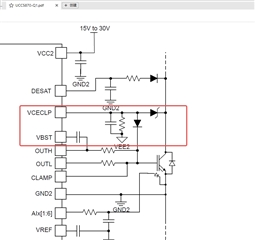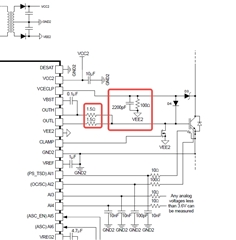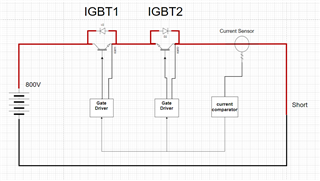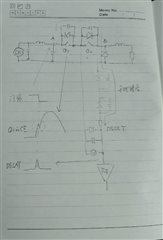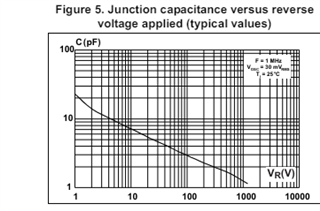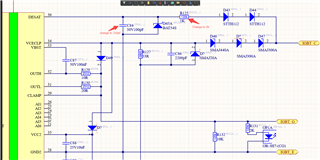Tool/software:
Hello, we recently used a gate drive chip UCC5870-Q1 when the active clamping function is triggered, the chip will heat up and even damage (active clamping pin VCECLP resistance becomes about 10 Ohm).
Your company's reference design does not protect the pin, I would like to ask you how to deal with the pin? Is it possible to add TVS between the VCECLP pin and VEE2, what is the recommended clamp voltage TVS?Thank you!
